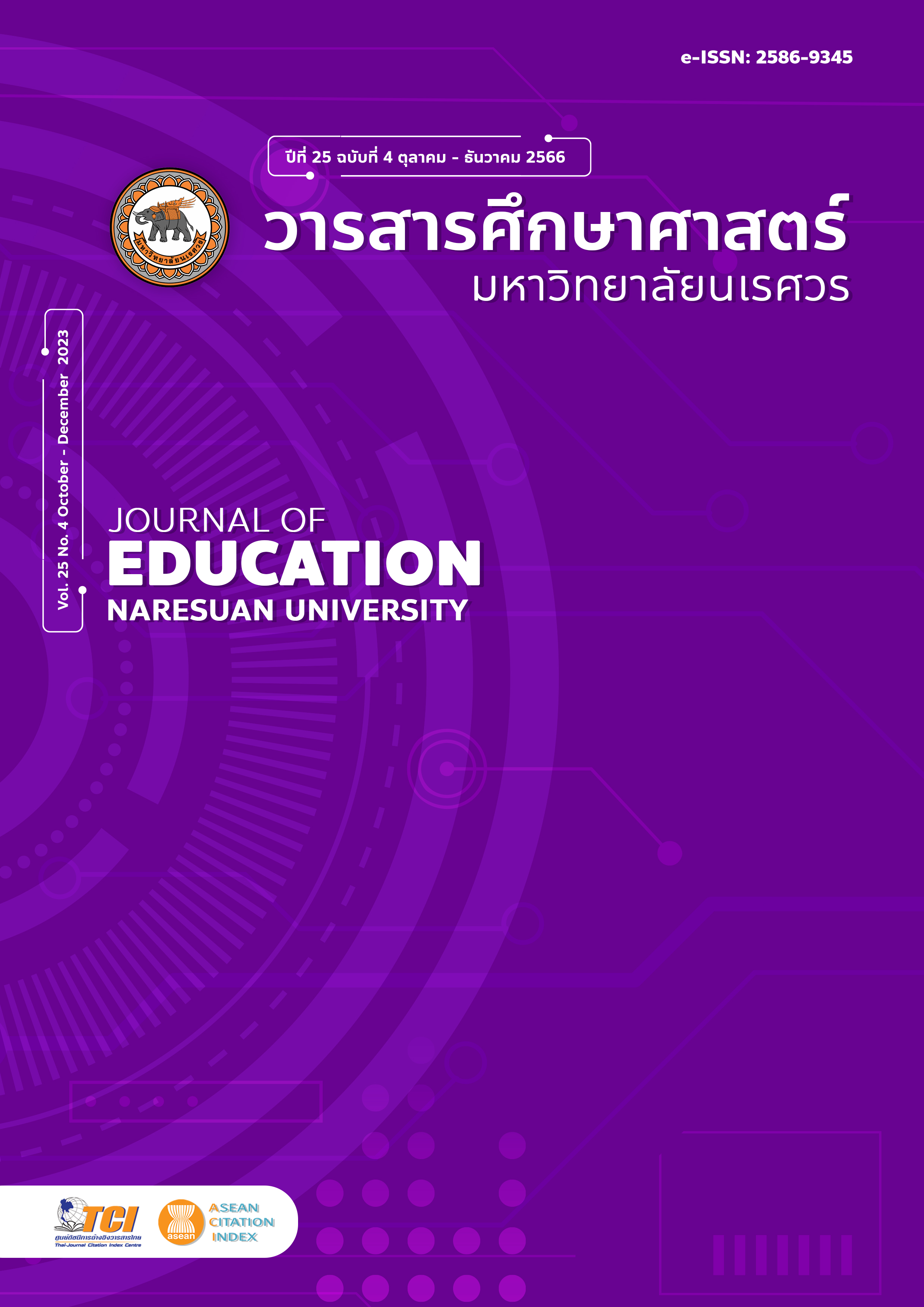EFFECTS OF COMBINED SAQ TRAINING AND FLEXIBILITY TRAINING ON INCREASING THE AGILITY IN FUTSAL PLAYERS
Main Article Content
Abstract
The purpose of this study was to investigate the effect of combining S.A.Q. and flexibility training program on the agility of futsal athletes. The quasi-experimental method was employed in this research. The sample group consisted of 20 male futsal athletes between the ages of 18 - 23 years from Naresuan University Phitsanulok Province, obtained using purposive sampling techniques. The samples were randomly allocated to the control group (CG; n=10) and experimental group (EG; n=10). Both groups received regular training program (including the endurance running, speed ladder drills, speed pyramid, and futsal playing) 5 times a week for a period of 8 weeks. In addition, the experimental group received training by combing the SAQ training and flexibility training for a period of 8 weeks. The Illinois Agility Test was administered to assess the agility of both groups before and after training and results recorded. Data were analyzed using independent samples t-test and dependent samples t-test. The level of statistical significance was .05. The results showed that there was no difference in the agility as reflected by the Illinois agility test between groups before training. After training, the experimental group had agility significantly higher than before (P < .05). The time covered (16.66 ± .52 s) than the control group (17.36 ± .68 s), whereas no changes were observed for control group compared to baseline (P < .05). Conclusively, this study demonstrated that an implementation of SAQ training and flexibility training was effective for increasing athlete’s agility as reflected by the Illinois agility test.
Article Details

This work is licensed under a Creative Commons Attribution-NonCommercial-NoDerivatives 4.0 International License.
The owner of the article does not copy or violate any of its copyright. If any copyright infringement occurs or prosecution, in any case, the Editorial Board is not involved in all the rights to the owner of the article to be performed.
References
Alexander, J. C. (2016). Welcome to United States Futsal. Retrieved May 23, 2016, from http://www.futsal.com/index.php/information-usff
Getchell, B. (1979). Physical fitness: A way of life (2nd ed.). USA: John Wiley and sons.
Hale, J. (2004). Quickness training. Retrieved January 31, 2016, from http://www.brianmac.co.uk/articles/scnilla5.htm
Krabuanrat. C. (2014). Science of Coaching. Bangkok: Faculty of Education, Kasetsart University.
Moore, R., Bullough, S., Goldsmith, S., & Edmondson, L. (2014). A systematic review of futsal literature. American Journal of Sports Science and Medicine, 2(3), 108-116.
Nageswaran, A. S. (2013). Effect of SAQ training on speed agility and balance among inter collegiate athletes. International Journal of Scientific Research, 2(1), 1-2.
Oakley, J. C. (2007). The Effect of dynamic and static stretching on performance. California, PA: California University of Pennsylvania.
Pipatpaisankoon, K., Changnoi, T., & Kongkaew, P. (2017). The effect of agility training in students enrolled for table tennis subject at the institute of the Institute of Physical Education Lampang Campus. Journal of Graduate Research, 8(1), 170-182.
Prompoy, B. (2002). Futsal. Bangkok: M. B. P.
Trambadia, H., & Jadav, M. (2012). Effects of Static and Dynamic Stretching on Agility Performance in Tennis Players. Indian Journal of Physiotherapy and Occupational Therapy, 6(1), 36-39.
Tokirie. D. (2018). The effect of SAQ training program upon agility and futsal dribbling ability of higher education futsal player. The Golden Teak: Humanity and Social Science Journal, 24(2), 70-83.
Worakiat, C. (2005). The effect of agility training on dribbling speed of futsal (Master thesis). Bangkok: Srinakharinwirot University.
Walter, R. T. (2010). ACSM's guidelines for exercise testing and prescription/American College of Sports Medicine. Philadelphia: Wolters Kluwer Health/Lippincott Williams & Wilkins.


